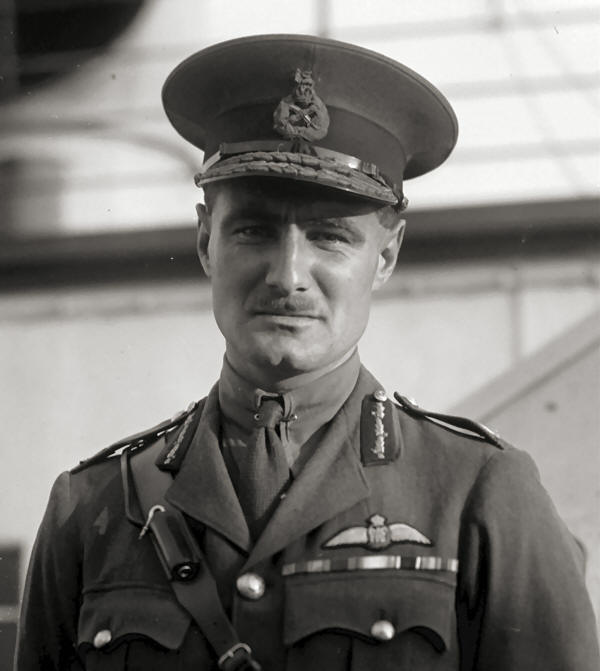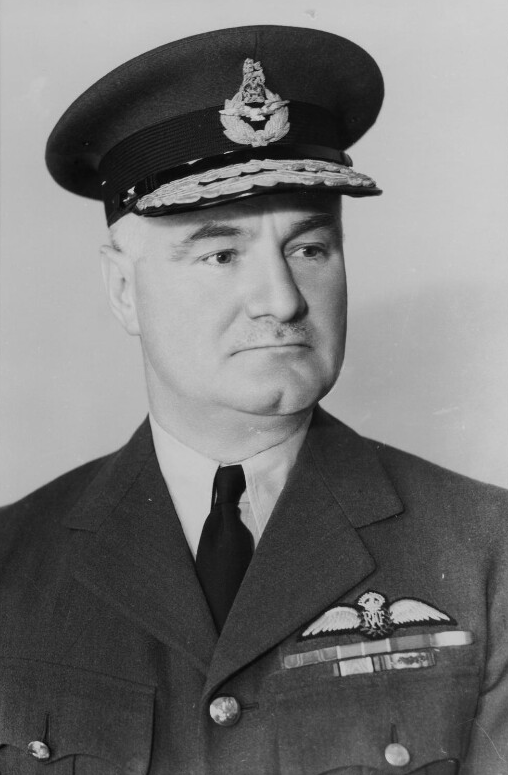Alfred Cecil Critchley
by Howard Coster
quarter-plate film negative, 1942
NPG x11113
Air of Authority - A History of RAF Organisation
Air Commodore A C Critchley (73730)

 Alfred Cecil
b: 23 Feb 1890
d:
Alfred Cecil
b: 23 Feb 1890
d:
CMG - 29 Mar 1919, CBE - 2 Jun 1943, DSO - 3 Jun 1916
(Army): - 2 Lt: 21 Jun 1910, Lt: xx xxx xxxx, Capt: 21 Jun 1915, (T) Maj: 21 Dec 1915, (T) Lt Col: 3 Nov 1916, (T) Brig-Gen: 4 Mar 1918.
(RAF): Brig-Gen: 1 Apr 1918.
(RAFVR): Fg Off: 30 Aug 1939, Act A/Cdre: 30 Aug 1939, Gp Capt: xx xxx xxxx, (T) A/Cdre: 1 Jun 1943
Alfred Cecil Critchley
by Howard Coster
quarter-plate film negative, 1942
NPG x11113
xx xxx 1907?: Soldier, Queen Victoria Rifles
xx xxx xxxx: Attended Royal Military College, Kingston.
xx xxx xxxx: Attended Musketry School
xx xxx xxxx: Officer, Infantry Regiment.
21 Jun 1910: Officer, Strathcona's Horse
xx xxx xxxx: Commandant, Regimental Riding School.
xx xxx 1914: Squadron Commander, Strathcona's Horse
xx xxx 1915: Adjutant, Strathcona's Horse
13 Jul 1916: Staff Captain, HQ 7th Infantry Brigade
3 Nov 1916: Commandant, Canadian Corps Training School, France
19 Dec 1916: GSO2 (Training), HQ Canadian Corps.
21 Jan 1917: Commandant, Canadian Army School, Bexhill (Graded as GSO I from 1 Apr 1917)
4 Mar 1918: GOC, RFC Training Brigade
1 Apr 1918: GOC RAF Training Brigade
21 May 1919: Relinquished his commission on ceasing to be employed
30 Aug 1939: AOC, No 54 (Reserve) Group
7 Dec 1943: Resigned his commission
Born in Calgary, his mother died when he was two giving birth to his brother. He was brought up on a ranch and soon developed a love for all things physical. In 1899 the family returned to England and he began attending school at The Meads. At twelve his father decided he should join the Royal Navy, however, a bout of scarlet fever and a reduction of the entry age to Osbourne resulted in his failing the entrance exam and no second chance. A move to St Bees School was planned as a preliminary to entering Sandhurst, but when his twin half-brothers were born the financial situation was such that he was sent back to Canada to work in the Bank of Montreal.
Joining the militia, he applied to attend the Royal Military College and was accepted. Completing the course he was not immediately commissioned and he attended the Musketry School at Rockcliffe. Promised a commission in the Cavalry he took a temporary commission in an infantry regiment whilst waiting but in 1910 he was awarded a permanent commission in Starthcona's Horse. Much of his work at this time was in the training and inspection of the Militia, but was then made Commandant of the Regimental Riding School.
Shortly after the outbreak of war his regiment sailed for England, arriving on Salisbury Plain in November 1914. Going to France in 1915 he became Adjutant to his regiment and at the end of the year returned to Britain where he got married. On his return to France he became a Staff Officer and shortly afterwards was wounded whilst touring the trenches, however, he back at the front by 1 June 1916. In mid 1916 he was chosen to command a new training centre to be set up in France for the Canadian Corps. His success in the training field led to him being asked to take control of the training of RFC cadets, a role he maintained until the end of the war.
During the inter-war period he went into business and undertook a number of ventures including the introduction of Greyhound Racing to Britain. In April 1939 he wrote to the Air Ministry suggesting that in the event of war the RAF would need a training system for aircrew similar to that he had established in WW1. However, having heard nothing for four months he made plans to re-join the army when he was summoned to the Air Ministry and asked to take charge of RAF aircrew training. He oversaw the initial training of aircrew until 1943 when he was asked to take over the running of BOAC, which also involved the planning of a new airport for London at Heathrow. However, dissatisfied with government plans for post-war civil aviation he resigned in 1946 and started Skyways, but once again government plans saw the closure of this airline in 1950. In 1953 he went blind overnight, but continued to carry out a wide range of duties and activities as his condition permitted.
Recommendation for the award of Companion of the Order of St Michael and St George
"CRITCHLEY, Lieutenant-Colonel Alfred Cecil, DSO
For good work in the organizing and administration of the Canadian Training School."
(Source - Deputy Minister's Confidential File re Honours and Awards", in National Archives of Canada, RG.9 III A.1, Volume 107)
This page was last updated on 16/03/25©
![]() W J Crisham
W J Crisham
![]()